Enzo Ferrari Museum, Modena, Italy
Until February 16th, 2026
As every year, the Enzo Ferrari Museum presents a themed temporary exhibition, and for 2025 the brand is returning to the history of its “supercars”. The particularity of these models is that each one highlights the techniques used in competition at the time it was launched.


The story begins in 1984 with the Ferrari GTO, sometimes also called the 288 GTO to differentiate it from the 250 GTO of the 1960s. As with the 250 GTO, its label stands for “Gran Turismo Omologato”. In fact, this 288 GTO was developed for Group B homologation for circuits and rallies, and to achieve this, 200 examples had to be produced. For Ferrari, this marks a return to this type of competition and to small special series. While the lines are inspired by the 308 GTB, the 288 GTO is longer and more aggressive, making it distinctly different.
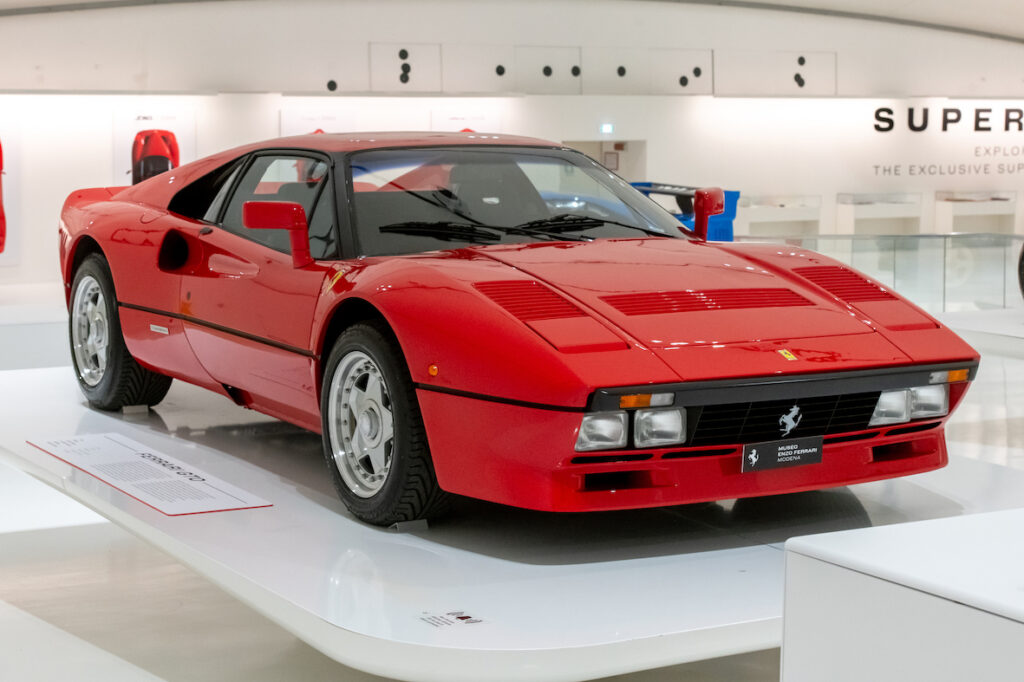
With its carbon fiber body and twin-turbocharged V8 engine developing 400 hp, the GTO broke new ground in several respects. Finally, following several fatal accidents, the FIA changed the regulations and banned these overpowered Group Bs. Nevertheless, the GTO won over customers when it was unveiled, and 272 examples were built, more than the 200 planned for homologation.
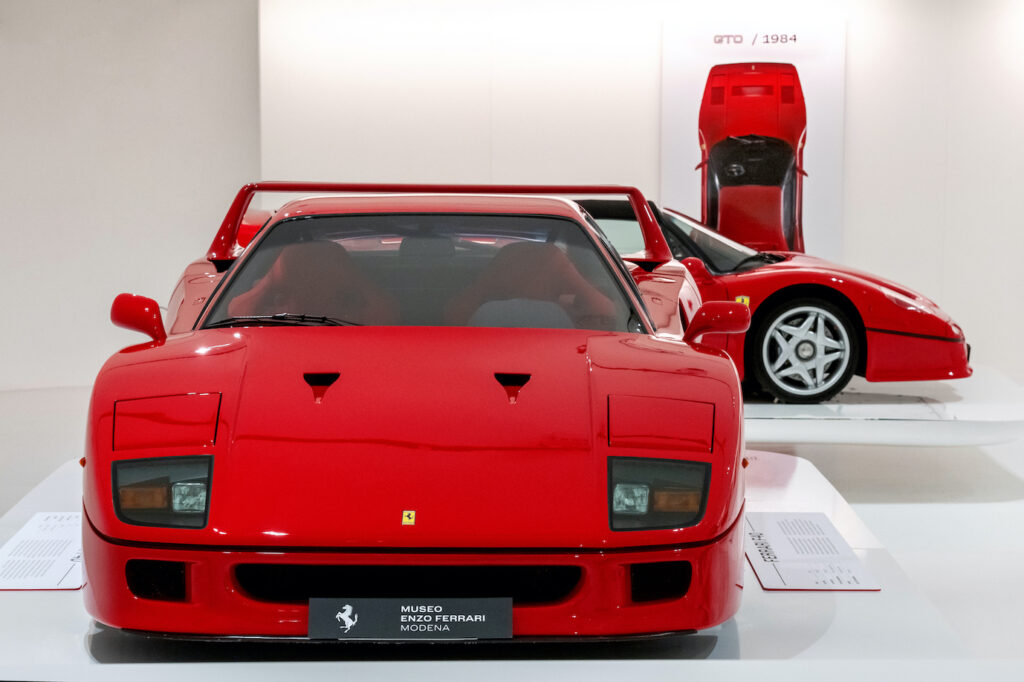
A few years later (1987), Ferrari presented the F40 for the brand’s 40th anniversary. Building on the experience of the GTO and its twin-turbo V8, Ferrari went even further in its use of composite materials and racing inspiration, notably with its huge rear wing. The F40 will make several appearances in competition, including the 24 Hours of Le Mans.
Planned for a limited series of 400 units, 1,311 were actually produced. Despite this, the car retains a very high value on the second-hand market. The F40 was also the last road-going Ferrari presented during Enzo Ferrari’s lifetime.
Its successor, the F50, arrived in 1995, a little ahead of the brand’s 50th anniversary. Here again, Ferrari applied the latest racing technologies directly, notably with a composite monocoque. The engine returned to the naturally-aspirated V12, and this time production was effectively limited to 349 units. To buy it, you had to be a fervent Ferrari customer, and it was one of the very first production cars where the manufacturer chose the “lucky customers”, rather than the other way round.
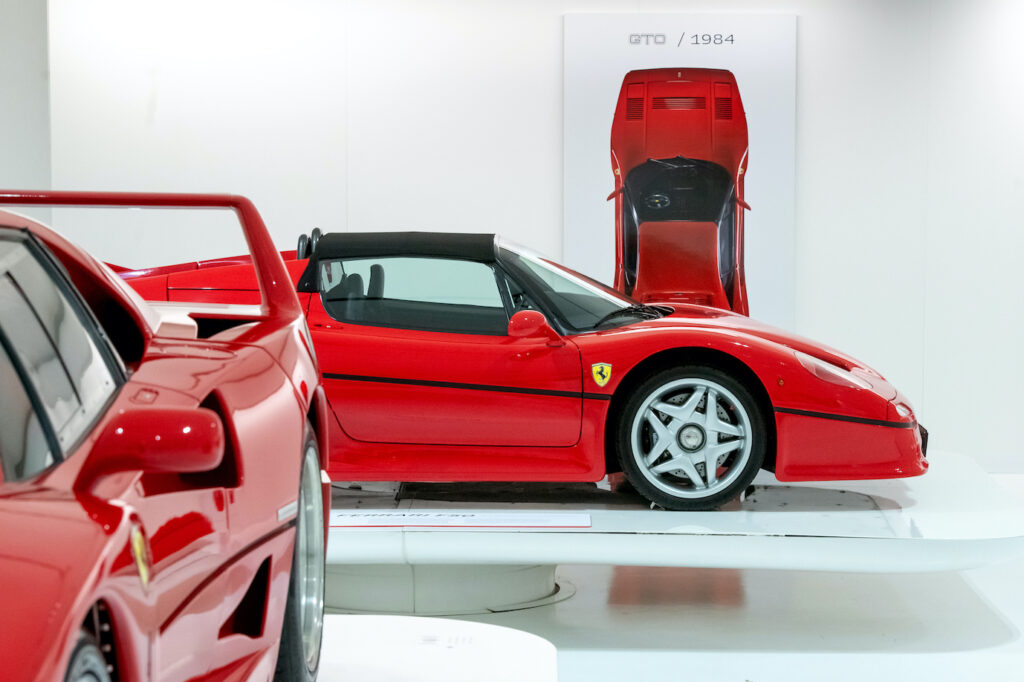
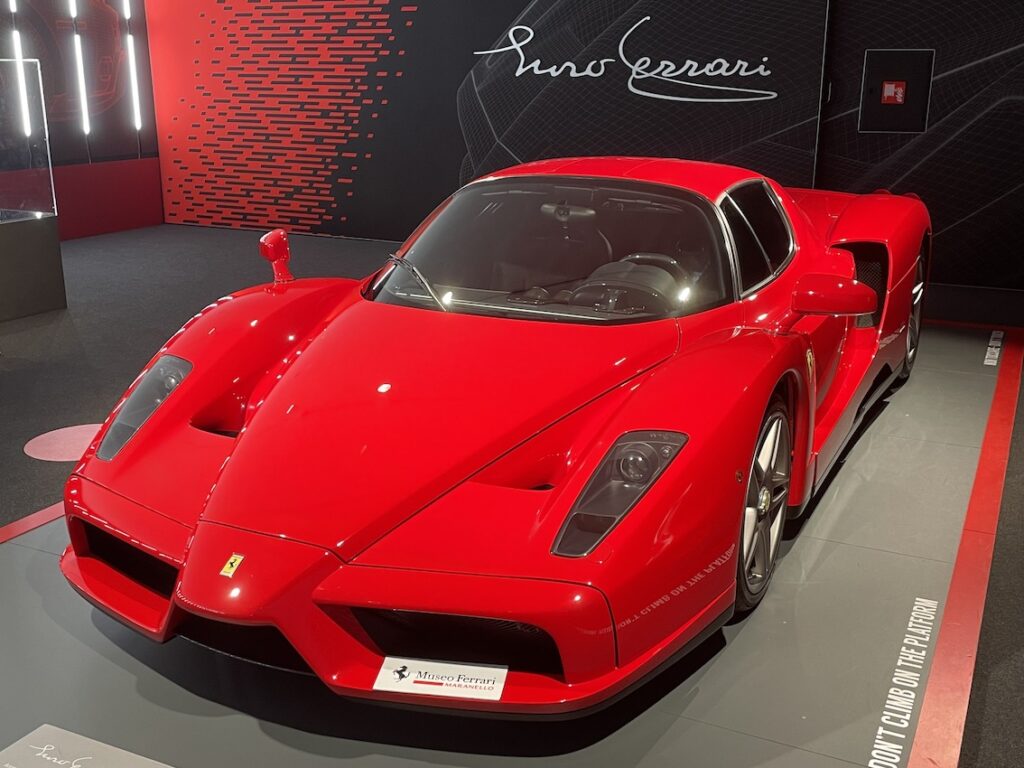
It wasn’t until 2002 that the F60 was launched, but was rather called “Enzo”, in homage to the Commendatore, who died in 1988. With styling inspired by the F1 cars of the 2000s, and aerodynamic design directly derived from racing, notably with the ground effect and rear diffuser, the Ferrari Enzo is powered by a 660 hp V12, enabling it to exceed 360 km/h. 349 examples were planned, but in the end 400 were produced, again with a selection of customers.
In 2013, Ferrari presents the “LaFerrari”. Following the “tradition” of these supercars, the latest racing techniques are incorporated, including an electric motor with energy recovery, directly inspired by the KERS system used in Formula 1. The V12 develops 800 hp and the electric system 163 hp, for a total output approaching 1,000 hp. 500 units were built, followed by 200 “Aperta” spyder versions and then 40 FXX-Ks reserved for track use, but outside any official category.
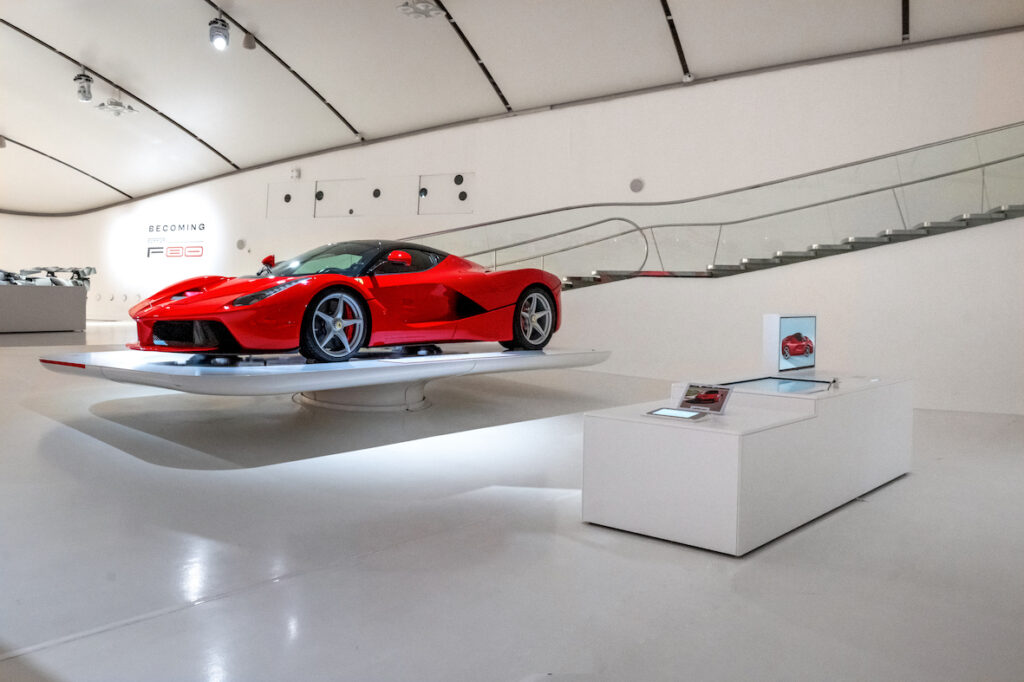
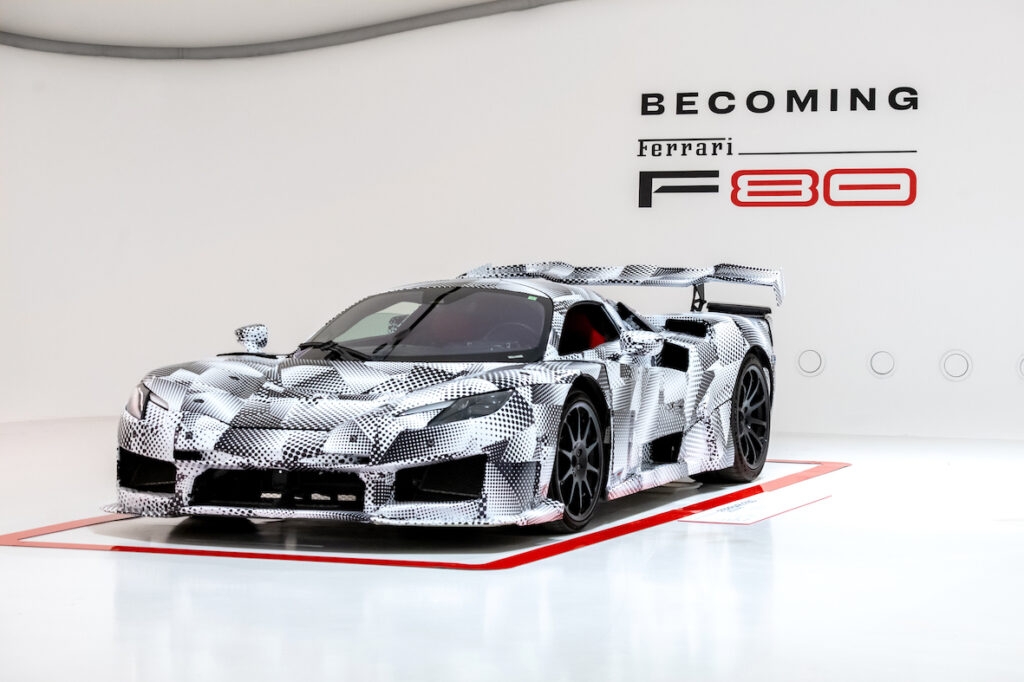
In 2024, Ferrari presented the F80, the latest in this line of supercars and hypercars. The F80 exploits the latest advances in racing, particularly in terms of powertrains. Its twin-turbo V6 is directly derived from that of the Ferrari 499P, winner of the 2023 and 2024 Le Mans 24 Hours. It already develops 900 hp, and is assisted by 3 electric motors for a cumulative output of 1,200 hp.
Although equipped with these electric motors, the F80 does not have the capacity to run on 100% electric power. These motors are there to boost performance, particularly acceleration, thanks to the instantaneous power delivered by the electric motors. To emphasize that the F80 is the latest model, the exhibition will feature several successive versions, starting with a “camouflaged” F80.
The exhibition is rounded off by a some FXX models reserved for the racetrack and racing models (including one of the F40 “Competizione”) to underline the direct link between this model family and racing. Finally, the Enzo Ferrari Museum has integrated several digital islands into the exhibition, each dedicated to one of the supercars on display. These interactive systems provide access to thousands of digitized archive documents, enabling visitors to follow and understand the design and development processes of these exceptional models.


The photos on this page belong to the Enzo Ferrari Museum, no right of reproduction without the express permission of the museum.
